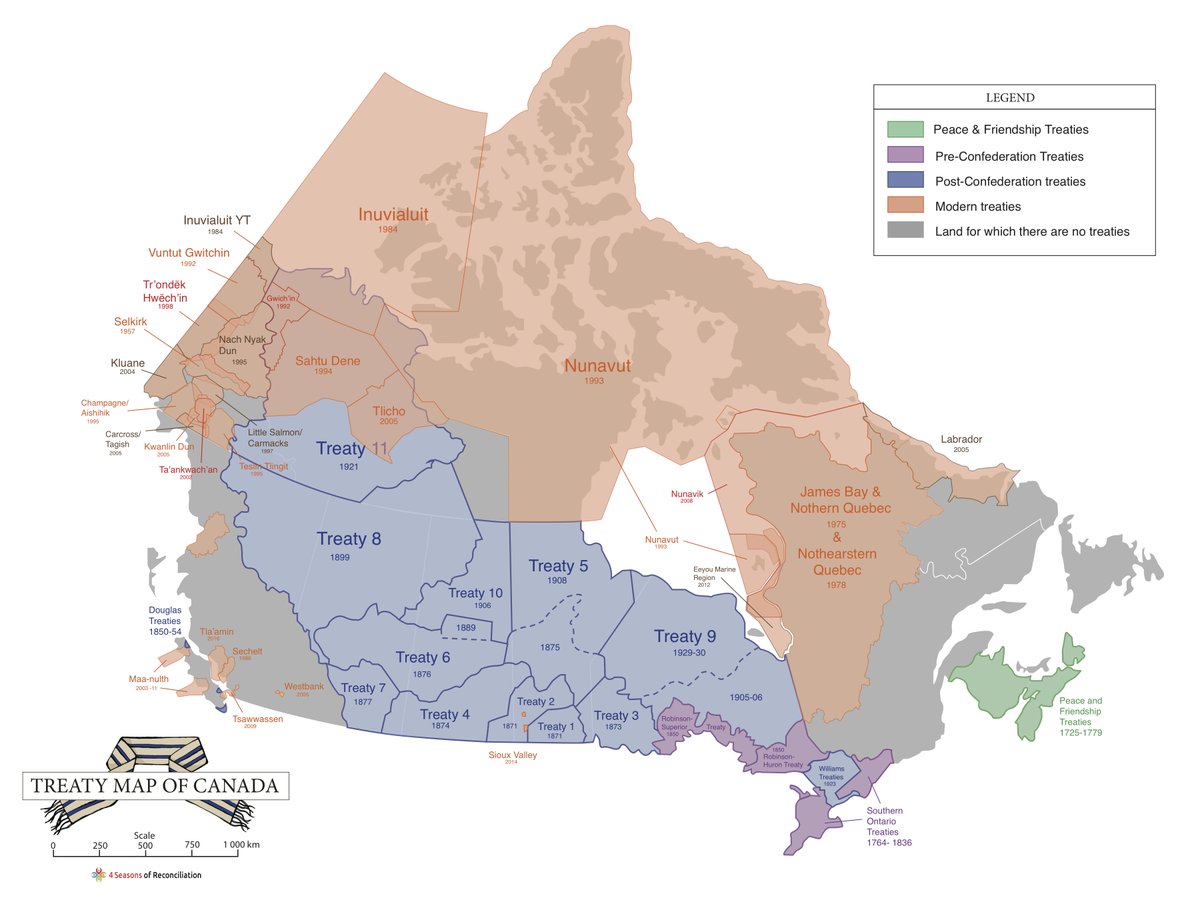1) This variation map overview of the #treaties has some nice changes from the usual presentation. The colour coding groups them better, so that you can see at a glance (for example) why Treaty 1 is not actually the first treaty but rather the first post-Confed treaty. (thread)
2) The gray area is described as "Land for which there are no treaties" which improves on the problematic use of "unceded" as a contrast to "treaty". Treaties are *not* examples of "surrender" despite what we& #39;re constantly told about "land sales" between "consenting" parties.
3) There are a number of reasons to be cautious about labeling treaties this way (as the opposite of & #39;unceded& #39; - which is ostensibly & #39;lawfully surrendered& #39;):
First, the treaties are not homogenous. They cannot be lumped in together and talked about as if they& #39;re all the same.
First, the treaties are not homogenous. They cannot be lumped in together and talked about as if they& #39;re all the same.
4) Second, the written texts which do actually use phrases that imply massive swaths of territory were "ceded, yielded, surrendered" cannot possibly be understood as the sole & legitimate interpretation of the spirit of those treaties.
5) Anyone who& #39;s actually studied them knows that the written texts were so different from the verbal negotiations, expectations & promises made by and for the negotiating parties that the textual alterations would themselves be considered a crime under contract law (then & now).
6) Even if a particular treaty did in fact constitute a land ‘surrender,’ in the eyes of *all* its signatories (a big "if" in itself), it also assumes that the treaty was never voided by ‘breach of contract’.
7) Treaty 1, for example, was broken - even by its altered, duplicitous *written* terms - by "the Dominion" of Canada almost before the ink was dry.
8) Some of the ways in which the spirit & letter of the treaty was broken include:
a) *deliberate* failure on the part of the colonial regime to incorporate the verbal understandings and promises of both parties;
a) *deliberate* failure on the part of the colonial regime to incorporate the verbal understandings and promises of both parties;
9) ... b) imposition of external legislation such as the Indian Act (which had iterations or proto-iterations imposed on Manitoba in 1874 that were themselves violations of Treaty 1);
c) broken promises with respect to "reserve land" locations, sizes, and boundaries; ...
c) broken promises with respect to "reserve land" locations, sizes, and boundaries; ...
10) and d) state & non-state land thefts & land encroachments, including the foundation of illegal settler colonies on designated reserve land. The Town of Selkirk was itself a monumental breach of Treaty 1& #39;s promises to the People of Peguis at what was then called "St. Peter& #39;s."
11) People interested in the details of just one aspect of this process & some of the First Nations resistance to it may find my M.A. thesis on the topic of some use: "& #39;As She Shall Deem Just& #39;: Treaty 1 & the Ethnic Cleansing of the St. Peter& #39;s Reserve, 1871-1934" (U of M, 2009)
12) Any uncritical description of Treaty 1 as a "land surrender" fails to recognize that land was not only not surrendered in some kind of consensual land sale, but even by the terms that did get incorporated into text, it was completely breached & voided by 1874 at the latest.
13) Even by European property and contract laws (then and now) -- and I am not suggesting that ought to be the standard -- this suggests that *all* of southern Manitoba (if not most of Canada) remains unceded territory.

 Read on Twitter
Read on Twitter


